
Catalog excerpts
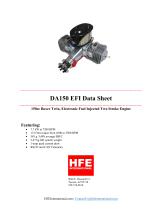
DA150 EFI Data Sheet 150cc Boxer Twin, Electronic Fuel Injected Two Stroke Engine 7.7 kW at 7200 RPM 13.8 Nm torque from 4500 to 5500 RPM 585 g / kWh average BSFC 3.67 kg full system weight 1-amp peak current draw RS232 and CAN Telemetry
Open the catalog to page 1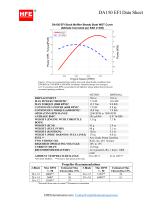
Figure 1. Power curve generated from steady state wide open throttle conditions from 3500 RPM to 7500 RPM in 500 RPM increments. Measured torque was averaged over 30 seconds at each RPM, accounting for all high/low torque spikes that are present in normal operating conditions. DISPLACEMENT MAX POWER (7200 RPM)* MAX TORQUE (5000 RPM)* CONTINUOUS POWER (6500 RPM)* CONTINUOUS TORQUE (6500 RPM)* OPERATING RPM RANGE AVERAGE BSFC WEIGHT (ENGINE WITH THROTTLE BODY) WEIGHT (ECM) WEIGHT (FUEL PUMP) WEIGHT (IGNITION) WEIGHT (WIRE HARNESS/ FUEL LINES) FUEL** TWO STROKE OIL REQUIRED OPERATING VOLTAGE...
Open the catalog to page 2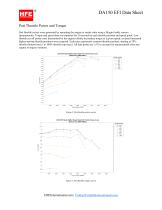
Part Throttle Power and Torque Part throttle curves were generated by operating the engine at steady state using a Magtrol eddy current dynamometer. Torque and speed data was captured for 30 seconds at each throttle position and speed point. Low throttle cut off points were determined by the engines ability to produce torque at a given speed; as speed increased higher starting throttle positions were required. Each trace represents constant throttle position, starting at 20% throttle (bottom trace) to 100% throttle (top trace). All data points are ±5% to account for measurement error and...
Open the catalog to page 3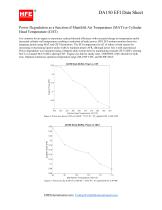
Power Degradation as a function of Manifold Air Temperature (MAT) or Cylinder Head Temperature (CHT) It is common for an engine to experience reduced thermal efficiency with increased charge air temperature and/or increased cylinder wall temperature resulting in reduction of brake power. HFE EFI systems monitor these two temperate points using MAT and CHT thermistors. The EFI compensates for ΔT of either or both sensors by increasing or decreasing injector pulse width to maintain proper AFR, although power loss is still experienced. Power degradation was measured using a Magtrol eddy...
Open the catalog to page 4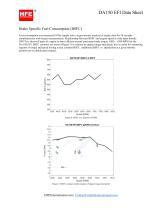
Brake Specific Fuel Consumption (BSFC) Fuel consumption was measured (10Hz sample rate) via gravimetric analysis at steady state for 30 seconds simultaneously with torque measurements. Relationship between BSFC and engine speed at wide open throttle (WOT) is shown (Figure 6); engine is most efficient around maximum brake torque, 4500 – 5500 RPM for the DA150 EFI. BSFC contours are shown (Figure 7) in relation to engine torque and speed; this is useful for estimating regions of torque and speed having a near constant BSFC. Additional BSFC vs. speed plots at a given throttle position are...
Open the catalog to page 5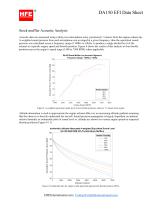
Stock muffler Acoustic Analysis Acoustic data was measured using a thirty-two-microphone array, positioned 1.3 meters from the engine exhaust tip. A-weighted sound pressure from each microphone was averaged at a given frequency, then the equivalent sound pressure was calculated across a frequency range of 100Hz to 10kHz, to produce a single decibel level of the exhaust at a specific engine speed and throttle position. Figure 8 shows the results of this analysis at four throttle positions across the engine’s speed range (1500 to 7500 RPM) where applicable. Figure 8. A-weighted equivalent...
Open the catalog to page 6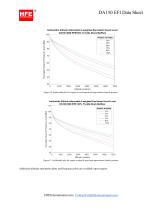
Figure 10. IsoHumidic plot for engine at cruise speed and approximate throttle position. Figure 11. IsoHumidic plot for engine at takeoff speed and approximate throttle position. Additional altitude attenuation plots and frequency plots are available upon request.
Open the catalog to page 7All HFE International catalogs and technical brochures
-
DA 70 EFI MIL
37 Pages
-
80S – 15 BHP
2 Pages
-
DA 35 EFI
4 Pages
-
DA 100 EFI MIL
35 Pages





